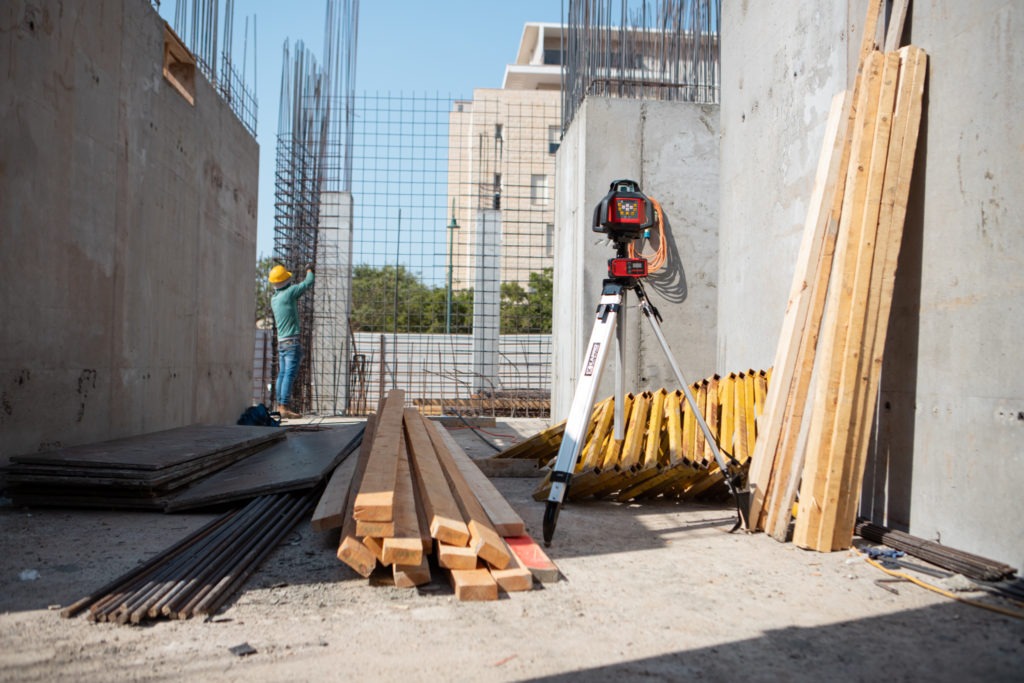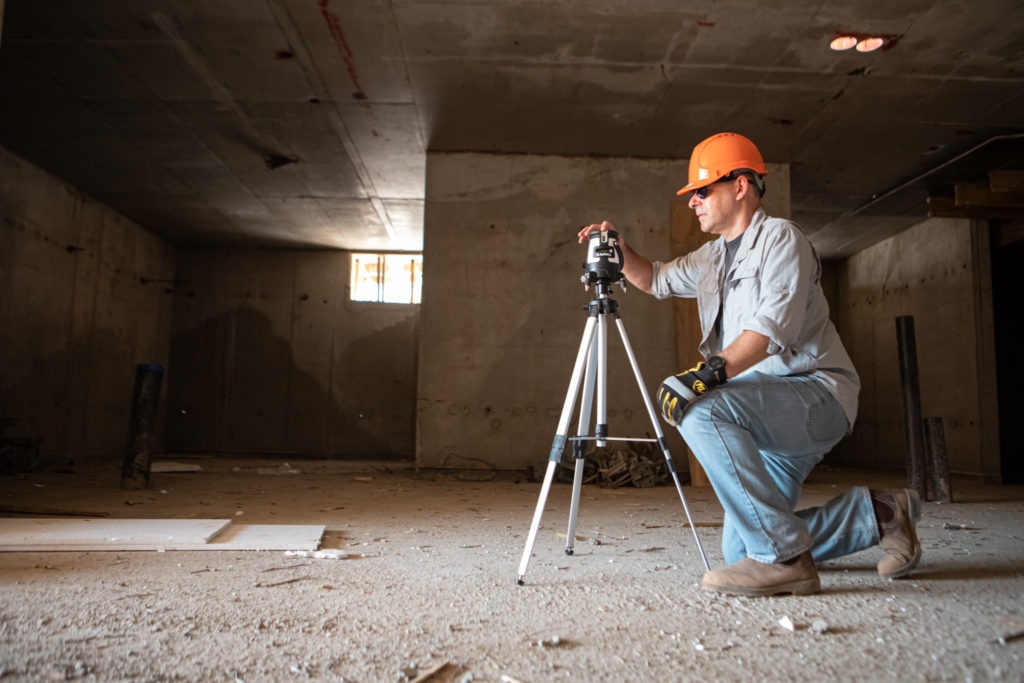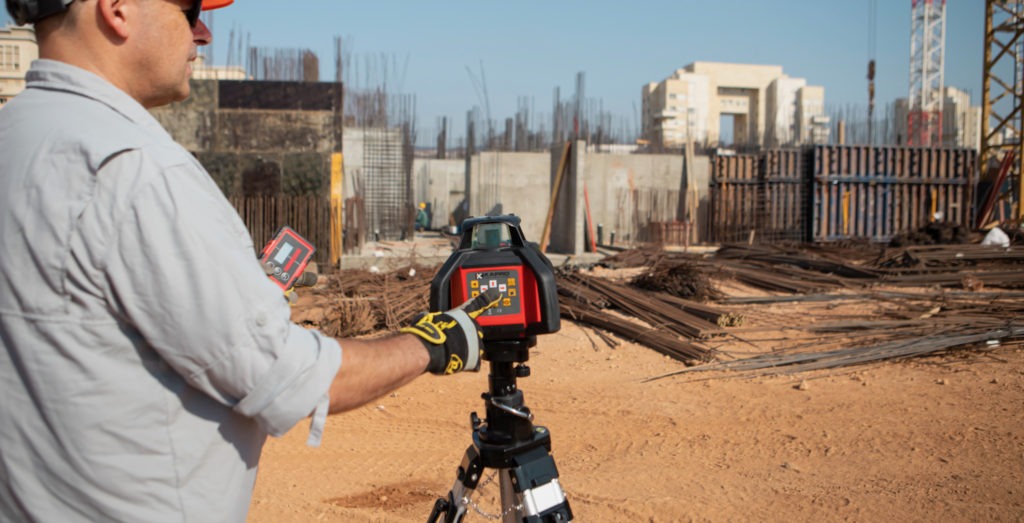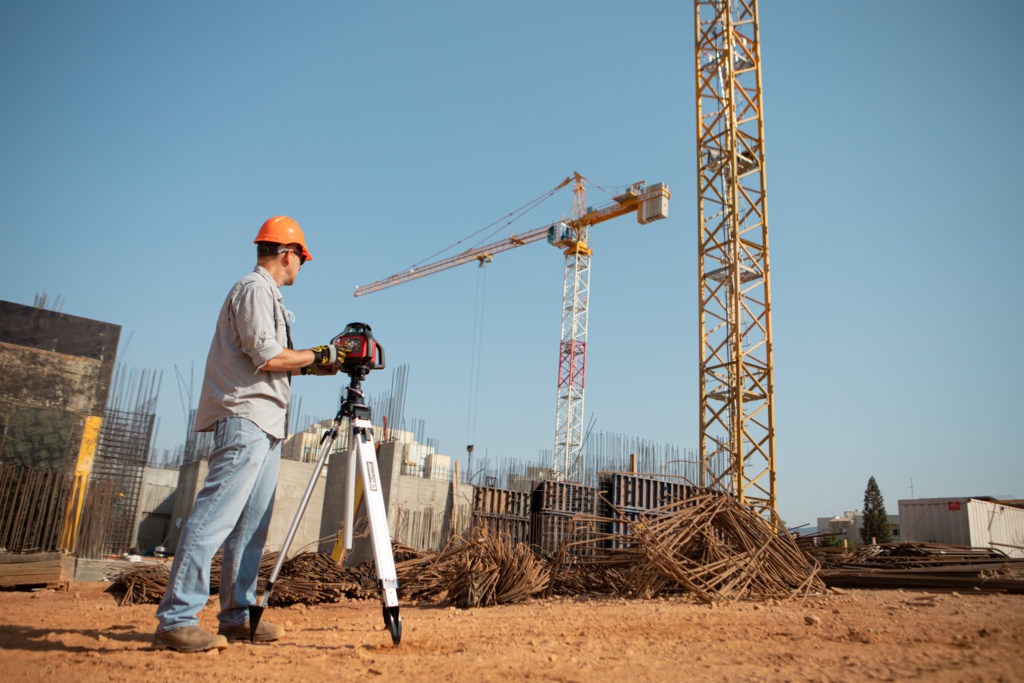Words and Photos: Kapro Tools
They say there are two kinds of masons in the world, those who’ve made the switch to laser levels and those about to do so. If you’re the latter, here are some key benefits and common questions surrounding bringing a laser onboard.
Laser Levels 101
Lasers are used across a myriad of trades and applications for leveling and aligning – from DIY to industrial construction and everything in between. For instance, framers use them for cabinet and window installs, while plumbers set pipe straight. These tools come in a wide array of categories to serve the specific needs of each trade.

Green Vs. Red
This is a common debate among users, both having their benefits and detriments. Green lasers appear 4X brighter to the human eye than red lasers at the same power output. This makes green lasers more popular, especially amongst professionals. Its enhanced visibility, however, does have a drawback. The diode that produces the green color in these lasers does require more energy than their counterparts. Thus, green lasers have approximately 2.5X shorter battery life than red lasers.
If you are going to be working indoors, red lasers might very well be bright enough for you and save you some cash at the same time. If you feel that a brighter, green laser is a must, you can counter the battery limitation by purchasing multiple batteries and rotating them throughout the day.
Laser Control
Depending on your needs and budget, there are 3 types of laser leveling mechanisms to consider. The first is manual leveling. The operator must adjust via thumb screws to level the unit along with the help of bubble vials. Although more than possible to work with, they are not ideal for professionals as they are slow to level and can be prone to error if the user makes a mistake.
The second, which is most common, are self-leveling lasers. Diodes, the semiconductor that produces the beam, are mounted on a pendulum within the laser’s case. Once the user releases the lock, gravity and magnets work together to correctly level the diode within. Self-leveling lasers offer a greater degree of accuracy and achieve its in-level position much faster than manual lasers. Many also come with manual modes for angular work, such as laying tile, as well.
Lastly, electronic or rotary lasers are top of the line lasers that self-level via servomotors. These heavy-duty instruments project 360 beams both horizontally and vertically at the touch of a button. They work by rotating a beam of lightning at such high speeds that they appear to be solid lateral planes to the human eye. Most come with up to 6 speed selections, thus affecting both your line visibility and your overall battery life.
Accuracy, accuracy, accuracy
There’s a reason we describe work that is dead-on as laser level. The degree of precision a high-quality laser can produce is by far its best-selling point. Many top of the line lasers reach an accuracy of about 0.0001 in/in, each and every time, with the touch of a button.
Not only do lasers enhance your work, but also eliminating string altogether removes a lot of room for error. That means no slipped pins or sagging, snapping lines. Without a line, there is more space for trowel movement, without the threat of knocking it out of place.
Lasers are also ideal for solo work and mitigating the need for partners to work together to set a line in the first place. This frees your team up to work more effectively. Once you become familiar with your laser and practice in setting it up, the time saved in hours of labor quickly adds up.
The last argument for lasers is their compact versatility. Portable and dynamic, they can easily be set in tight spaces and near isolated structures where traditional string line can’t easily be placed.

But what if?…
Now that you’re well aware of the pros of laser work, you might have some very valid concerns still casting doubt over your decision. Let’s take a moment to dispel these.
#1 You can’t see laser beams outdoors
True, but it’s also a little more nuanced than that. If you are working indoors or in dimly lit areas, you’ll be able to see the beam quite well. If not, there are some pieces of equipment you should definitely invest in, such as a detector and BeamFinder glasses. The BeamFinder glasses can enhance beam visibility in partly lit job sites, while the detector helps guide you at long distances and in strong sunlight.
#2 You can’t bring a laser out in inclement weather
Depending on the laser you choose, this may or may not be the case. Higher end lasers are generally rated IP65 for these sorts of job sites. IP65, or Ingress Protection, is a numerical rating for dust and water protection. The 6 indicates that the product is 100% dust and particle proof due to its vacuum seal. The 5 represents its water resistance. In this case, the product would be protected from damp environments, rain, and low-pressure water jets such as that of garden hoses.
In weather stronger than described above, you might have to ask yourself if you would truly be outside setting line anyway.
#3 Lasers only work in one or two dimensions
Again, this is only true of some lasers. A more substantial laser might have anywhere from 3-5 lines and a plumb dot. Modern, 360° lasers provide multiple axes and full room coverage if working indoors.
#4 Lasers can harm the cornea in your eyes
While there are indeed some high-powered lasers that could very well do damage to your eyes, these are not the same class of laser one would use on a construction site. Lasers used as layout and measurement tools fall into the classification of Class II.
These lasers are considered safe to look at either briefly or unintentionally. While it is recommended that you avoid staring straight into the beams for any extended amount of time, permanent vision damage isn’t a primary concern while using a laser.

The Takeaway
Laser levels have become staples in other trades due to their accuracy, ease of use, and time saved. With such a wide array of features and benefits, there is one to meet your specific needs. If you are a mason looking to take your professional work to the next level, it’s time for a laser level.
